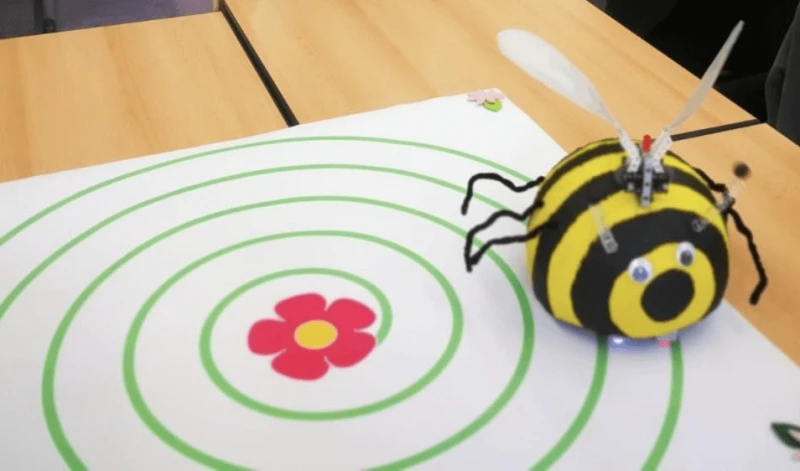Robot bees: How can artificial pollination help vertical farming thrive?
Robot bees: How can artificial pollination help vertical farming thrive?


Robotic pollinators resemble oversized bees equipped with wheels and an arm. This technological innovation is designed to address the pressing issue of natural pollinator scarcity, such as that of bees, which poses a significant challenge to global food production.
Their immediate purpose is to perform the repetitive, time-consuming, and labor-intensive tasks of flower inspection, mapping, pollination, and development tracking, freeing up farmers to concentrate on planting, irrigation, and pest control.
For the long term, the robotic pollinator aims to care for individual crops with optimized efficiency, ensure food production during periods of insect decline, and provide value-added services such as crop data tracking.
…
By operating 24/7, robotic pollinators offer greater efficiency than humans, reducing labor costs and enhancing food yields. They can work continuously, day and night, even in harsh conditions.
…
Natural pollinators, irrespective of their cost-effectiveness and efficiency, can spread viruses. Traditional farming often employs commercially produced bees as natural pollinators. These bees carry the risk of escaping controlled greenhouse settings and infecting wild bee populations, potentially exacerbating an already critical issue: the declining insect population, which is driven by climate change, rapid urbanization, and pesticide use.
Robotic pollinators can help stop these infections from spreading.
This is an excerpt. Read the original post here

 | Videos | More... |

Video: Nuclear energy will destroy us? Global warming is an existential threat? Chemicals are massacring bees? Donate to the Green Industrial Complex!
 | Bees & Pollinators | More... |

GLP podcast: Science journalism is a mess. Here’s how to fix it

Mosquito massacre: Can we safely tackle malaria with a CRISPR gene drive?

Are we facing an ‘Insect Apocalypse’ caused by ‘intensive, industrial’ farming and agricultural chemicals? The media say yes; Science says ‘no’
 | Infographics | More... |

Infographic: Global regulatory and health research agencies on whether glyphosate causes cancer
 | GMO FAQs | More... |

Why is there controversy over GMO foods but not GMO drugs?

How are GMOs labeled around the world?

How does genetic engineering differ from conventional breeding?
 | GLP Profiles | More... |

Alex Jones: Right-wing conspiracy theorist stokes fear of GMOs, pesticides to sell ‘health supplements’




 Viewpoint — Fact checking MAHA mythmakers: How wellness influencers and RFK, Jr. undermine American science and health
Viewpoint — Fact checking MAHA mythmakers: How wellness influencers and RFK, Jr. undermine American science and health Viewpoint: Video — Big Solar is gobbling up productive agricultural land and hurting farmers yet providing little energy or sustainabilty gains
Viewpoint: Video — Big Solar is gobbling up productive agricultural land and hurting farmers yet providing little energy or sustainabilty gains Fighting deforestation with CO2: Biotechnology breakthrough creates sustainable palm oil alternative for cosmetics
Fighting deforestation with CO2: Biotechnology breakthrough creates sustainable palm oil alternative for cosmetics Trust issues: What happens when therapists use ChatGPT?
Trust issues: What happens when therapists use ChatGPT? 30-year-old tomato line shows genetic resistance to devastating virus
30-year-old tomato line shows genetic resistance to devastating virus California, Washington, Oregon forge immunization alliance to safeguard vaccine access against federal undermining
California, Washington, Oregon forge immunization alliance to safeguard vaccine access against federal undermining The free-range chicken dilemma: Better for birds, but with substantial costs
The free-range chicken dilemma: Better for birds, but with substantial costs ‘You have to treat the brain first’: Rethinking chronic pain with Sanjay Gupta
‘You have to treat the brain first’: Rethinking chronic pain with Sanjay Gupta
